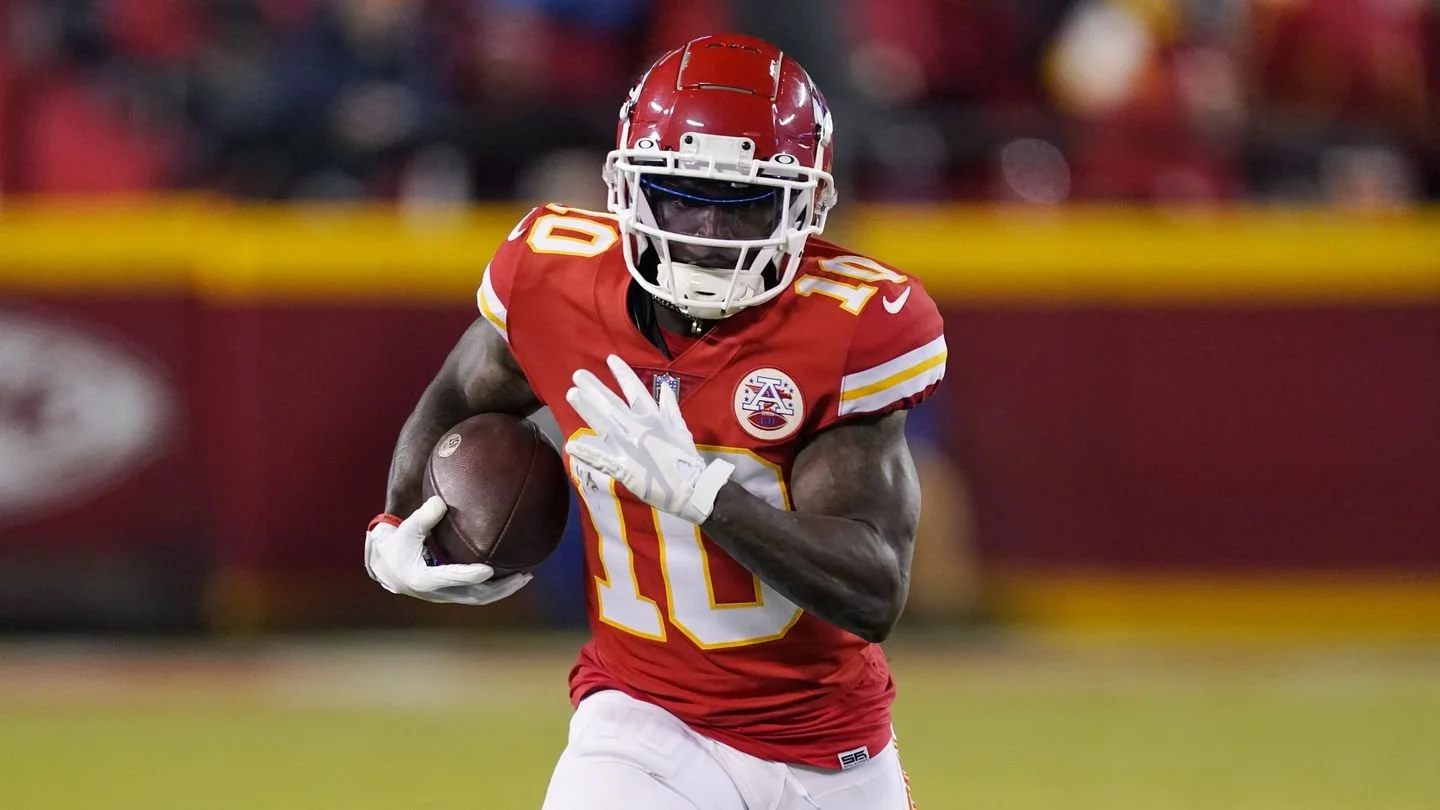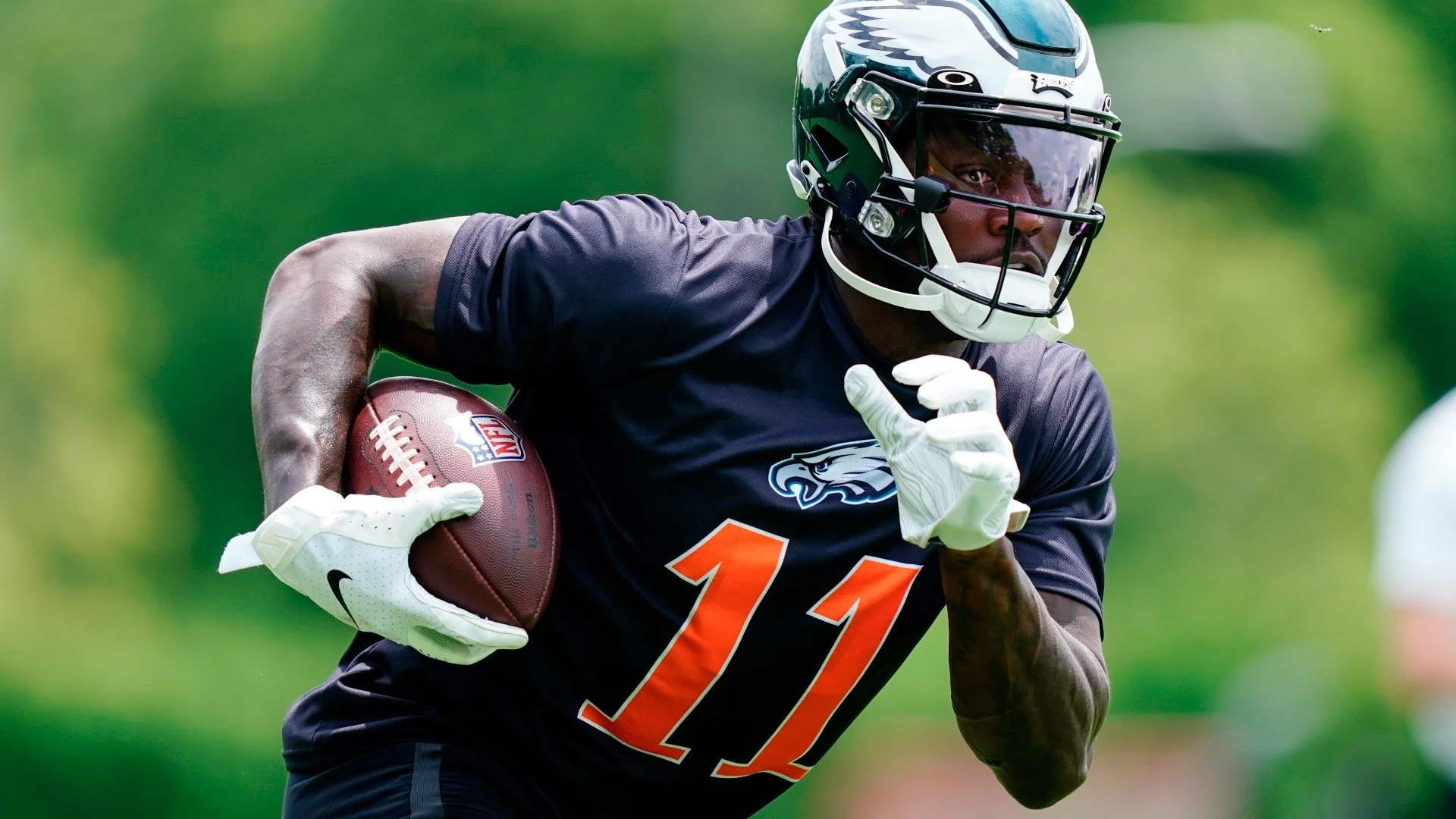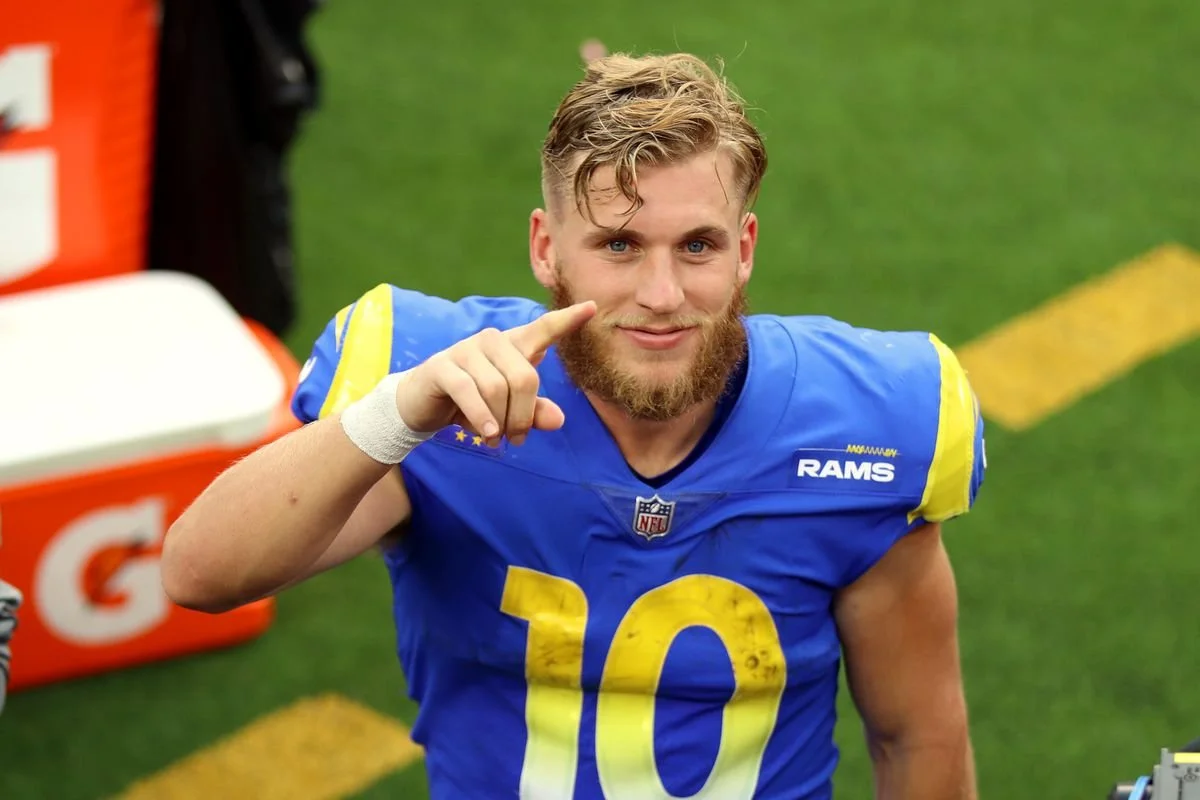2022: The Year of the Wide Receiver
Charlie Riedel/Associated Press
The 2022 NFL offseason was one of the most compelling and exciting offseasons in league history. It had everything: shocking QB trades (Russell Wilson, Deshaun Watson), the formation of defensive powerhouses (Raiders adding Chandler Jones, Chargers adding Khalil Mack and JC Jackson), and even a player who backed out of their agreed-upon contract (Randy Gregory). But despite the shocking trades, high-profile signings, and an intriguing draft, I think this year will be remembered for one thing: the wide receivers.
Heading into the offseason, the 2019 NFL Draft class had just finished up their third season. For players selected outside the first round, the upcoming season would be their last under their rookie contract, and they were now eligible for contract extensions. The 2019 wide receiver class was legendary, and the best members of that class were all selected in rounds two through seven. AJ Brown, Deebo Samuel, DK Metcalf, Terry McLaurin, Hunter Renfrow, and Diontae Johnson became eligible for new deals.
Photo by David Rosenblum/Icon Sportswire via Getty Images
March 14: the first day of the legal free agency tampering period. Christian Kirk, formerly of the Arizona Cardinals, agrees to a deal with the Jacksonville Jaguars, a four-year deal worth $72 million. He will be paid $22.5 million in his first year, which, at the time, made him the second-highest-paid wide receiver in the NFL. Kirk is a fine player, but he’s never had 1000 yards in a season. The Jaguars were in dire need of a wide receiver, so bringing in Kirk was not a bad move. However, paying him that much money was a poor decision, especially considering receivers like Allen Robinson, Odell Beckham Jr, and JuJu Smith-Schuster were available as well. The signing sent an irreversible ripple effect through the entire league.
March 16, two days later, the Cowboys traded four-time Pro Bowl wide receiver Amari Cooper to the Cleveland Browns for only a fifth-round pick. With two young stars at the position, Dallas could no longer afford Cooper’s twenty million dollar price tag. On March 17, the defending champion Los Angeles Rams signed Robinson. And on March 18, the Green Bay Packers dealt Davante Adams, arguably the best wide receiver in the NFL, to the Las Vegas Raiders, who gave him a five-year, 140 million dollar contract.
John Locher/Associated Press
If Kirk can earn $22.5 million annually, the best of the best can demand 28, 29, or even $30 million per year. The wide receiver market was already growing, but Kirk’s contract put that growth into overdrive. However, that weekend, other wide receivers were added on value deals: JuJu Smith-Schuster joined the Chiefs for less than four million dollars, and the Rams traded Robert Woods to the Titans to make room for Robinson’s contract.
As far as top-tier wide receivers go, the best was yet to come. On March 23, after 12 hours of wild rumors, the Kansas City Chiefs traded superstar Tyreek Hill to the Miami Dolphins, citing contract disputes as the reason behind the move. Miami gave Hill a four-year deal worth $120 million, a $30 million per year average. And with that, teams began reacting to the all-new value of wide receivers.
On April 7, the Buffalo Bills signed their star wide receiver Stefon Diggs to an extension worth $24 million per season. They elected to get ahead of the market’s predicted growth while rewarding Diggs in the short term. But while the Christian Kirk situation catalyzed the first half of the offseason, it was Deebo Samuel who set the rest of the offseason’s wide receiver news in motion.
Photo by Ronald Martinez/Getty Images
On April 20, Samuel demanded a trade, claiming that he disagreed with his usage in the offense. With roughly two weeks until the draft, this created a huge uproar, especially considering Samuel was coming off a career year and a first-team All-Pro nod. The NFL world held their breath as the draft crept closer, with many expecting a draft-night deal to go down. The 49ers did not have a first-round pick, so trading Samuel would likely gain them a very high selection. And yet, the draft came and went, and Samuel remained a 49er.
As I mentioned earlier, Samuel is a member of the 2019 draft class, along with stars like Brown and Metcalf. Those three have the same agent: Tory Dandy of Creative Artists Agency. While the Samuel trade talks died down, Dandy had been working behind the scenes, and on the first night of the 2022 NFL Draft, Dandy shocked the football world.
AP Photo/Matt Rourke
April 28: Brown, a client of Tory Dandy, was traded to the Philadelphia Eagles. In exchange, the Titans received the No. 18 overall pick and a third-round pick. Additionally, the Eagles gave Brown a four-year, one hundred million dollar contract. Brown told ESPN’s Turron Davenport that “[he] wanted to stay, but the deal [the Titans] offered was a low offer.” Like the Chiefs, the Titans traded their best wide receiver because they knew they wouldn’t be able to give him the contract he wanted.
The premium that teams spend on the wide receiver position grew rapidly. That same night, the Ravens traded Marquise Brown, also drafted in 2019, to the Arizona Cardinals in exchange for a first-round pick. Six wide receivers were drafted in the first round. Two were top-ten picks (Drake London, Garrett Wilson), and the other four were all involved in trades. Chris Olave and Jahan Dotson were traded for each other, Jameson Williams was drafted after the Lions moved up twenty spots in the first round, and Treylon Burks was the pick that the Eagles traded for AJ Brown.
While Samuel’s trade talks seem to have died down, Metcalf, a fellow Tory Dandy client, skipped the Seahawks’ mandatory minicamp, and rumors are floating about Metcalf potentially being on the move. But the biggest wide receiver news in the NFC West came recently when reigning Offensive Player of the Year and Super Bowl MVP Cooper Kupp signed an extension that will pay him $30 million this upcoming season, making him the highest-paid wide receiver in the NFL. Only fitting that the man who led the league in catches, receiving yards, and receiving touchdowns earned that money.
Photo by Katelyn Mulcahy/Getty Images
This offseason was incredibly important for all wide receivers, pushing the position's value into the upper echelon, alongside quarterbacks and pass rushers. The speed at which negotiations adapted after Kirk’s contract is staggering. It feels like the entire league is reevaluating their team-building strategies, especially with stud young wide receivers all over the NFL. Of course, all eyes will be on Minnesota’s Justin Jefferson, who has done nothing but dominate since he entered the league. It seems obvious that Jefferson will receive a market-setting contract if he continues to play the way he has so far.





